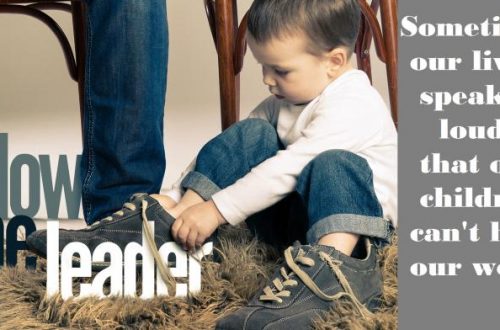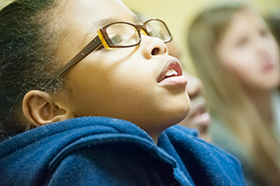Elements of an Effective Hour Part 2
Last time, I shared some ideas for how to have an effective hour in your Sunday school class. We discussed the first of our five E’s: Engage. Today we will discuss the remaining four: Explore, Expand and Express, and Evaluate.
2. Explore
Last time, I shared some ideas for how to have an effective hour in your Sunday school class. We discussed the first of our five E’s: Engage. Today we will discuss the remaining four: Explore, Expand and Express, and Evaluate.
2. Explore
This is when you go to the Bible to discover what God has to say about the need that’s been expressed. Each lesson must make this transition clear: When we have a need, we go to God’s Word to see what to do about it.
Read the Bible story out loud, using a clear voice and lots of inflection. Make it sound as though you are really excited by the content – as though you can hardly wait to get to the next phrase. Be expressive, reading the way someone would actually say the words if they were speaking them.
Have the children follow along with their fingers in their own Bibles. If your students use several translations, it may be wise to write out the passage and make copies so that they can follow along in the same version. It’s a little extra work, but it keeps everyone focused on the same words.
Yes, it is wonderful to ask students to read aloud. But I believe the main reading of the passage needs to be done in the clearest way possible. If the students read each verse, they often use different translations, speak at different volumes, and sometimes stumble over words. The result is that they don’t get the benefit of hearing Scripture read clearly and expressively as a unit, and the passage loses its continuity. Look for other opportunities for children to read the Bible out loud – not now.
I also believe teachers should teach with their Bibles open. Whatever tools you are using, place them inside your Bible so the students can see that it is God’s Word you are teaching from. After all, you are trying to instill in your students the habit of going to God’s Word. The best way to do that is through modeling.
I like to write notes in my Bible with a red pencil. (Must be the teacher in me!). One day a playful child saw my notes and said, “Hey, what’s black and white and red all over? Mrs. Capehart’s Bible!” Then he stopped short and looked at me, afraid that I would be upset at his joke. I only smiled. I want my students to want to look at my Bible and see a book well used and greatly loved. My Bible is like an old friend!
Of course, it’s important for children to get experience in actually using their own Bibles. If we want our students to go to the Word of God for wisdom in dealing with life issues, we need to train them how to do it. Here are a few guidelines:
• Show children how to divide the Bible in half with their thumbs and then to divide the section on the right once again in order to get close to the New Testament. A few practices with this will enable them to find their way quickly to the Gospels.
• Teach children the books of the Bible in order.
• Give students opportunities to practice looking up Scriptures without time pressure. You might pair the children up or direct them to work in groups. Be patient; remember, there are many adults who can’t find their way around the Bible! The more comfortable and successful kids feel in doing something, the more apt they are to do it. Success breads success. Let’s grow children who are comfortable with the Word of God.
During the “explore” phase of the lesson, it’s important to include activities that bring the Bible to life. Look for ways to integrate your knowledge of learner styles here and to offer experiences that will encourage authentic learning.
3. Expand and Express
Once your students have had a chance to explore both the human and scriptural perspectives of the lesson, you can help them begin to make life-applications. While the children may have been connecting the teaching to themselves all along the way, this is their opportunity to let the concepts take root.
This is the “do” part of the lesson. In the context of the lesson about the Good Samaritan, a Looker-oriented project might be to draw and color a picture of the roadside scene. A Talker-oriented project might be to divide into discussion groups and plan a service project to show concern for others. An Explorer-oriented project might be to stage a re-enactment of the story. A Thinker-oriented project might be to search newspapers or magazines for “Good Samaritan” stories or to research the origins of the “Good Samaritan” laws.
It’s not enough to stop there, though. Each lesson should call all students to formulate a plan of action for expressing the truth of the lesson in their own lives. You can stimulate this kind of thinking by asking questions, such as:
• When were you were too busy to help someone who needed you? What will you do the next time?
• Who will you care for this week? How will you explain to them why you want to help?
• Are there people like the man who was robbed in your neighborhood, in your church, in your class at school? How do you think God wants you to respond to those people this week?
Another effective way to encourage self-awareness in your students is to share from your own life experience. What opportunities have you had to apply the lesson of the Good Samaritan? Sharing from your heart can serve as a catalyst to get them thinking and examining their own hearts in the light of God’s Word.
The “expand and express” portion of the lesson can also lead to prayer. This should be a high point of your lesson time, communicating to the kids that they are not on their own as they see to apply the truths they have learned. Learning to pray with others is one of the great privileges of the Christian life. During prayer, children can express their care, concern, and support for one another. And if you help keep the prayer directed by the same single focus of the lesson, it can be a powerful learning experience, too. We will discuss this more in the next chapter.
4. Evaluate
A planned evaluation time can be one of the most important aspects of your lesson, offering students the opportunity to review and synthesize what they have learned. It can also give you important feedback about the kinds of activities that reach your unique learners – information that will help you in future planning.
When I do this phase, I like to briefly go over each activity from the lesson, highlighting interesting observations the children made throughout the class time. This affirmation of their contributions says to them, “You have a significant place in the body of Christ.” If we haven’t prayed yet, I find that this is a good time to pray and “commission” the children to put the lesson into practice.
After the children leave, it is important that you continue the evaluation. Ask yourself:
• What went well?
• What would I do differently if I taught the lesson again?
• What can I watch for in my students’ behaviors that will let me know they really learned the lesson?
• What follow-up questions can I ask in the next class session to reinforce what was taught today? (You’ll especially want to ask them how they applied the lesson during the week!).
As you carry out your evaluation phase, seek to have an eternal focus. We must never think of teaching God’s Word as just one more thing to check off our “To Do” list for the week. Remember, you are investing your time in a purpose that impacts eternity. In today’s transient society, it’s possible that you’ll see the kids move before you see them grow up. You may never witness the tangible results of your teaching. But the most significant thing you can do for a family is to lead their child to Christ. Trust God to do the rest.



One Comment
Adrian Amparo
Not only for Sunday School
I think these steps not only apply to a Sunday school, but also small group discussions or Bible study groups. Too often, the leaders of small groups tend to use the time to make a mini sermon. If they would follow the steps you've outlined here (but applied to adults) people would learn to lean on the Bible more for answers. This a great article. Thanks. God bless you and your ministry.